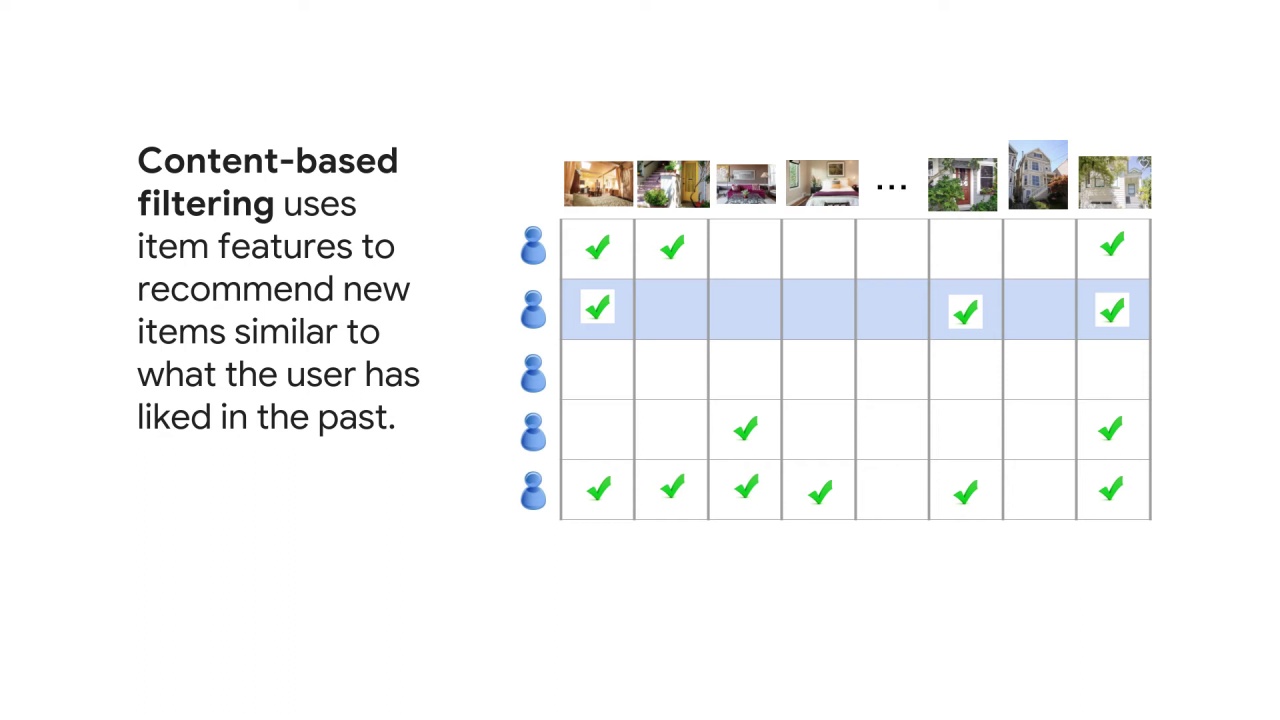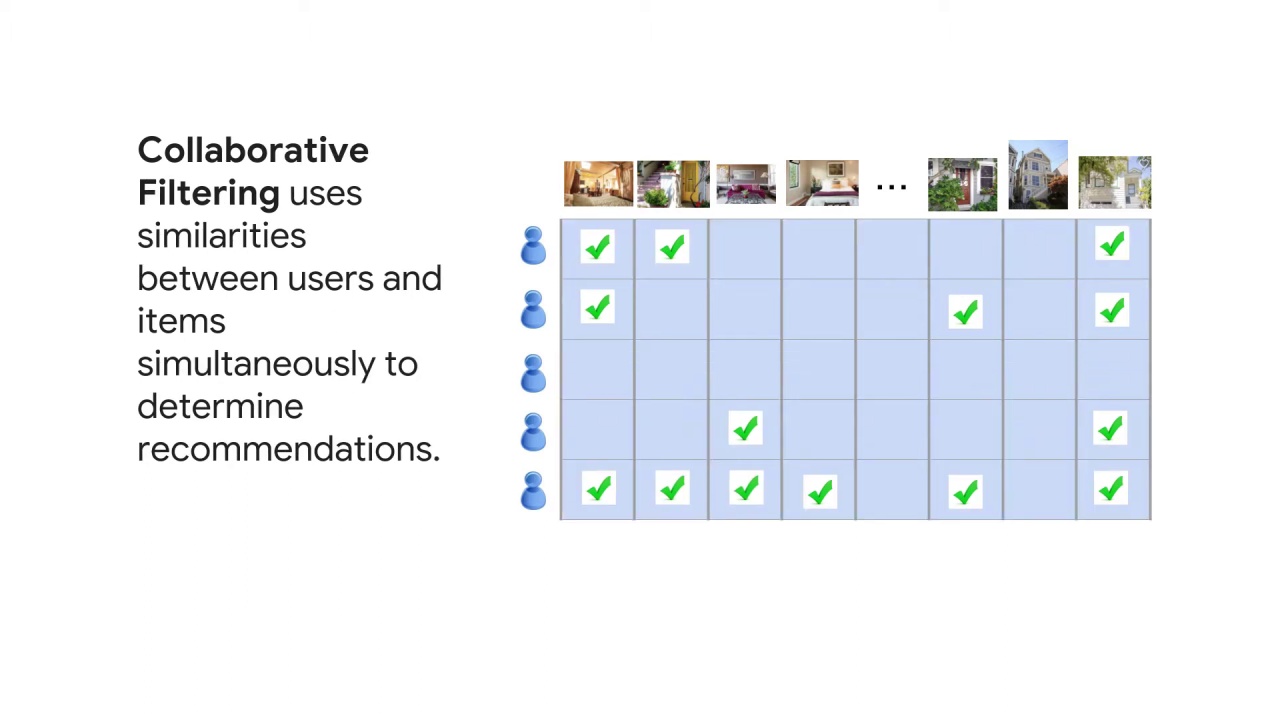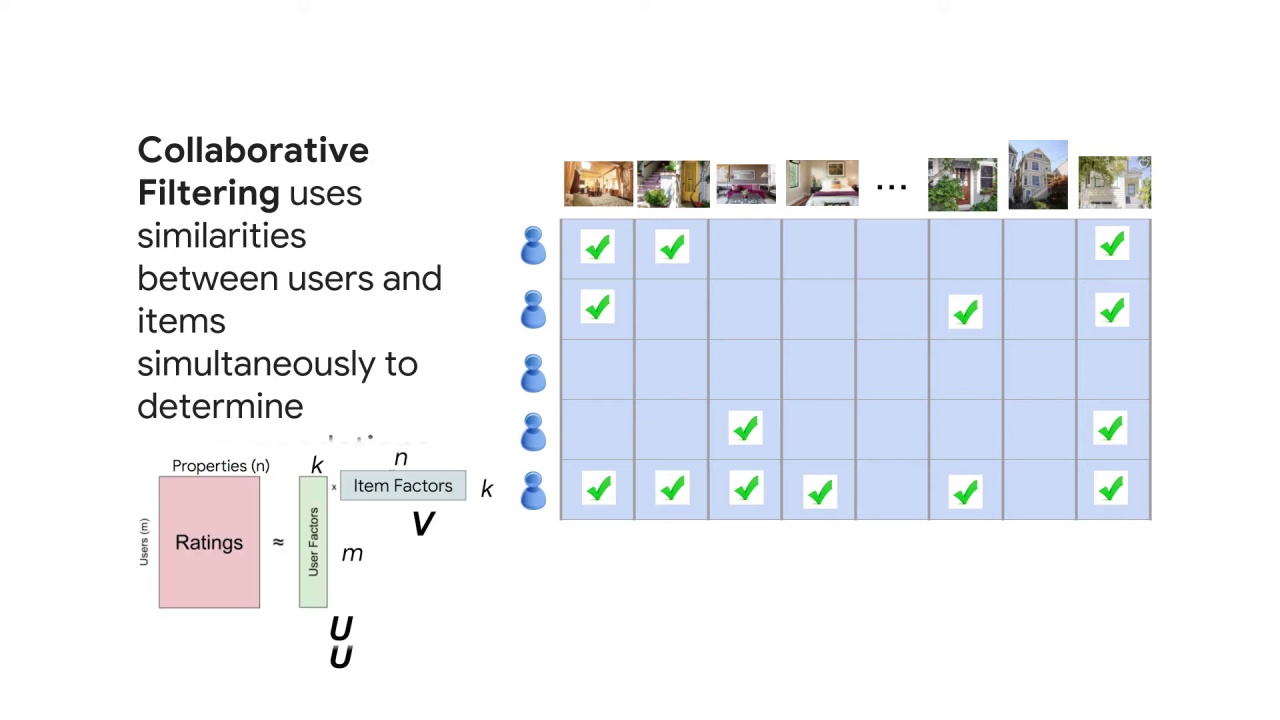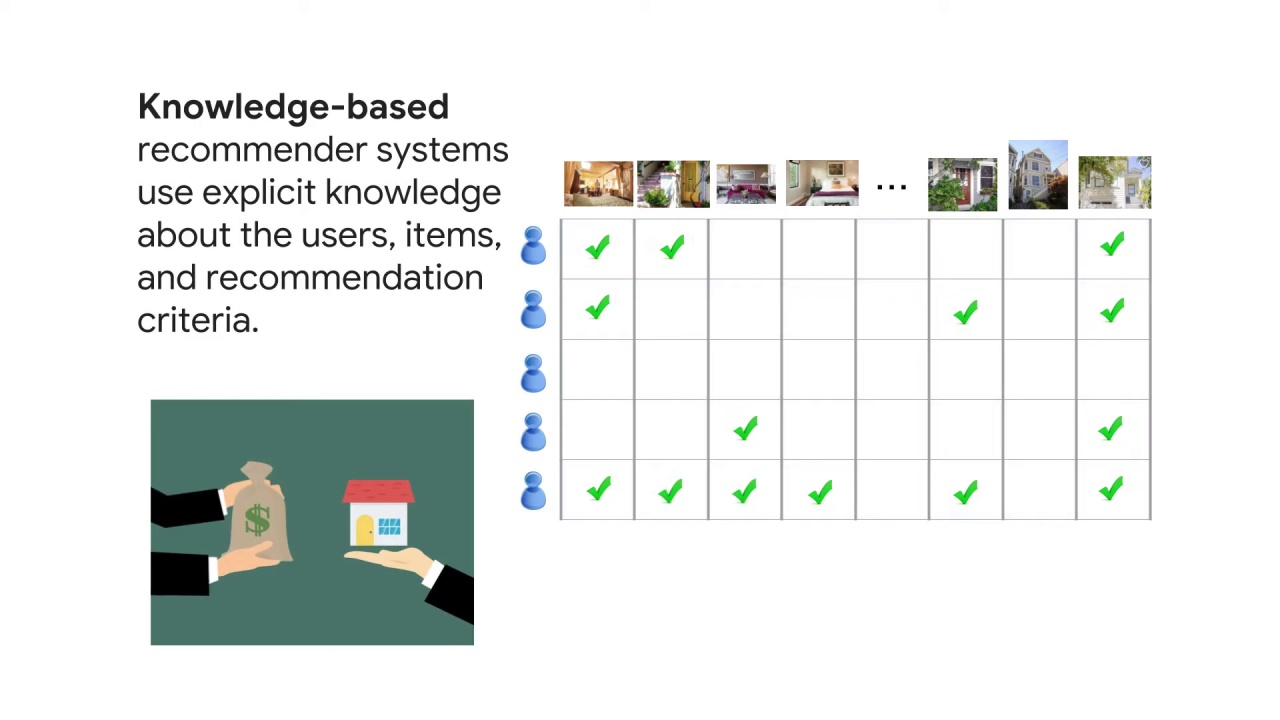Content-Based or Collaborative

A Content-Based method uses attributes of the items to recommend new items to a user.
It doesn’t take into account the behavior or ratings of other users for example.
If a user has rented and liked a lot of vacation homes on the beach, this method will suggest other similar homes that are also on the beach.
This is often done by hand engineering features for the items and learning how much a single user aligns with each of those features.
Using that feature representation of the user, it is impossible to extrapolate how a given user would rank unseen items.

A Collaborative Filtering model works with the entire user-item interaction matrix.
They consider all users, all items and all user item ratings.
Loosely speaking, they work with the idea that similar users will like similar items, that is, they use similarities between the users and the items simultaneously to provide recommendations.
This can allow for seemingly serendipitous recommendations, meaning they can recommend an item to a user A based only on the interest of a similar user B.
Another useful advantage is that the feature representations can be learned automatically so you don’t have to rely on hand engineering specific features as you would for a Content-based Filtering method.

This process often involves Matrix Factorization and behaves similarly to a Content-Based approach but does not rely on previously constructed features.

Knowledge-based recommender systems are based on explicit knowledge about the user’s preferences items and or recommendation criteria.
They are especially useful when alternative approaches such as collaborative filtering or content-based methods cannot be applied.
This occurs in situations where items are not purchased very often.
For example, if instead of renting a vacation house suppose we want to build a recommendation engine for buying a vacation house.
Because most people don’t buy houses often we probably wouldn’t have enough previous house buying information to use either a content-based or collaborative filtering approach.
In this scenario, Knowledge-based systems will often explicitly ask users for their preferences and then use that information to begin making recommendations.
